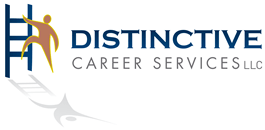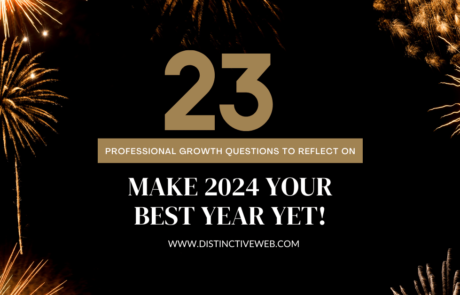
As the new year approaches, many of us reflect on our careers and contemplate a change. If you’ve been feeling unfulfilled, eager for new challenges, or ready to pursue a long-held passion, you’re not alone. In fact, January is one of the most popular months for job changes. But turning the desire for a new job into reality requires action.
Procrastination can be a significant hurdle. It’s easy to tell ourselves there’s always tomorrow, only to find that months have passed without progress. The key to overcoming inaction is to break your goal into manageable daily steps. By dedicating just 30 minutes each day, you can build momentum and make tangible strides toward your career aspirations.
This 21-day action plan is designed to help you kickstart your job search in the new year. Each day focuses on a specific task, guiding you through self-assessment, goal setting, networking, and application strategies. Let’s embark on this journey together and make 2025 the year you land your dream job!
Week 1: Self-Discovery and Assessment
Understanding where you are now is the first step toward where you want to be. This week focuses on self-reflection and evaluating your current professional situation.
Day 1: Reflect on Your Current Situation
Task: Take 15 minutes to list what you like and dislike about your current job.
Tip: Be honest and specific in your assessment. Consider aspects such as your responsibilities, work environment, company culture, growth opportunities, and work-life balance. This exercise will help you identify what you want to seek or avoid in your next role.
Detailed Guidance:
Day 2: Update Your Resume
Task: Locate your most recent resume and identify areas that need updating.
Tip: Focus on adding new skills, experiences, accomplishments, and any additional education or certifications you’ve obtained since your last update. Ensure that your resume reflects your current career goals.
Detailed Guidance:
Day 3: Evaluate Your Online Presence
Task: Google your name and review your social media profiles.
Tip: Ensure that your online presence portrays you professionally. Remove or privatize any content that may be viewed negatively by potential employers. Update your profiles to align with your job search objectives.
Detailed Guidance:
Day 4: Gather Your Achievements
Task: Collect awards, recognitions, positive feedback, and work samples.
Tip: Create a “brag book” or digital portfolio that showcases your accomplishments. This resource will be valuable during interviews and can enhance your confidence. You can even use these to build out your LinkedIn profile with multimedia.
Detailed Guidance:
Day 5: Identify Your Strengths
Task: Write down your top 10 professional strengths.
Tip: Reflect on skills that have been praised in performance reviews or areas where you excel. Consider both hard skills (technical abilities) and soft skills (communication, leadership).
Detailed Guidance:
Day 6: Assess Skill Gaps
Task: Compare your skills with job descriptions of your target positions to identify areas for improvement.
Tip: Identify any missing qualifications or experiences. Develop a plan to address these gaps through training, education, or practical experience.
Detailed Guidance:
Day 7: Set Clear Career Goals
Task: Define what you want to achieve in your next job and set SMART goals (Specific, Measurable, Achievable, Relevant, Time-bound).
Tip: Write down your goals and keep them visible. This will help you stay focused and motivated throughout your job search.
Detailed Guidance:
Week 2: Exploring Opportunities and Building Your Plan
This week is about identifying where you want to go and creating a roadmap to get there.
Day 8: Envision Your Dream Job
Task: Spend time visualizing your ideal workday. What tasks are you doing? What kind of environment are you in?
Tip: Write a detailed description to clarify your vision. Consider factors like company culture, team dynamics, responsibilities, and work-life balance.
Detailed Guidance:
Day 9: Research Potential Job Titles
Task: Brainstorm and list ten job titles that align with your desired role.
Tip: Use job boards, industry publications, and LinkedIn to explore variations and related positions. This will broaden your search and uncover opportunities you may not have considered.
Detailed Guidance:
Day 10: Analyze Job Postings
Task: Assess whether you meet the qualifications for your target jobs.
Tip: Be honest about your strengths and areas needing improvement. This will help you focus on roles where you have the best chance of success and plan to address any deficiencies.
Detailed Guidance:
Day 11: Evaluate Your Qualifications
Task: Collect awards, recognitions, positive feedback, and work samples.
Tip: Create a “brag book” or digital portfolio that showcases your accomplishments. This resource will be valuable during interviews and can enhance your confidence. You can even use these to build out your LinkedIn profile with multimedia.
Detailed Guidance:
Day 12: Define Your Unique Value Proposition
Task: Determine what sets you apart from other candidates.
Tip: Consider how you can help a company achieve its goals. Focus on specific ways you can add value, such as increasing revenue, improving efficiency, or enhancing customer satisfaction.
Detailed Guidance:
Day 13: Prepare Your Elevator Pitch
Task: Craft a concise and compelling summary of who you are professionally.
Tip: Your elevator pitch should be 30-60 seconds long, highlighting your background, skills, and what you’re seeking. Practice delivering it confidently.
Detailed Guidance:
Day 14: Create an Action Plan
Task: Outline the steps you need to take to achieve your career goals.
Tip: Break down your objectives into specific, actionable tasks with deadlines. This plan will serve as your roadmap moving forward.
Detailed Guidance:
Week 3: Taking Action and Building Momentum
With a solid foundation, it’s time to take proactive steps toward your new job.
Day 15: Update Resume and Cover Letter
Task: Perfect your resume and create a master cover letter template tailored to your target positions.
Tip: Customize your resume and cover letter for each application, emphasizing relevant skills and experiences. Use keywords identified from job postings.
Detailed Guidance:
Day 16: Optimize Your LinkedIn Profile
Task: Ensure your LinkedIn profile aligns with your resume and career goals.
Tip: Use a professional photo, update your headline to reflect your desired position, and write a compelling summary that showcases your value proposition.
Detailed Guidance:
Day 17: Expand Your Network
Task: Connect with former colleagues, classmates, and industry professionals.
Tip: Personalize your connection requests and engage with your network by commenting on posts and sharing valuable content.
Detailed Guidance:
Day 18: Reach Out to Recruiters
Task: Identify recruiters specializing in your industry and send connection requests.
Tip: Introduce yourself professionally and express your interest in new opportunities. Be clear about the types of roles you’re seeking.
Detailed Guidance:
Day 19: Join Professional Associations
Task: Become a member of industry-specific organizations.
Tip: Participate in events, webinars, and forums to expand your network and stay informed about industry trends.
Detailed Guidance:
Day 20: Apply for Targeted Positions
Task: Submit applications for positions that match your qualifications.
Tip: Customize each application to the specific job requirements. Highlight how your skills and experiences make you an ideal candidate.
Detailed Guidance:
Day 21: Reflect and Plan Next Steps
Task: Review your progress over the past three weeks.
Tip: Celebrate your achievements, identify areas for improvement, and adjust your plan as needed. Set new goals to maintain momentum.
Detailed Guidance:
Additional Tips and Strategies
Find an Accountability Partner
Partner with someone who can support and motivate you during your job search. Regular check-ins increase commitment and provide mutual encouragement.
Set Up Job Alerts
Use job boards to receive notifications about new postings in your field. This saves time and ensures you don’t miss opportunities.
Practice Interview Skills
Prepare answers to common interview questions and consider doing mock interviews. This will help increase your confidence and readiness for actual interviews.
Stay Positive and Persistent
Maintain a positive attitude and don’t get discouraged by setbacks. A resilient mindset helps you navigate challenges and keeps you motivated.
Your Next Move: Elevate Your Job Search with Professional Support
Embarking on a job search can be challenging, but you don’t have to do it alone. If you’re ready to accelerate your journey and make a lasting impression on potential employers, professional assistance can make all the difference.
At Distinctive Career Services, we specialize in crafting compelling resumes, cover letters, and LinkedIn profiles that highlight your unique strengths and achievements. Our team of expert resume writers understands what employers are looking for and can help you stand out in a competitive job market.
Ready to take the next step toward your dream career? Reach out to us today for more information and to receive a personalized quote tailored to your needs. Let us help you open the door to exciting new opportunities in 2025!








